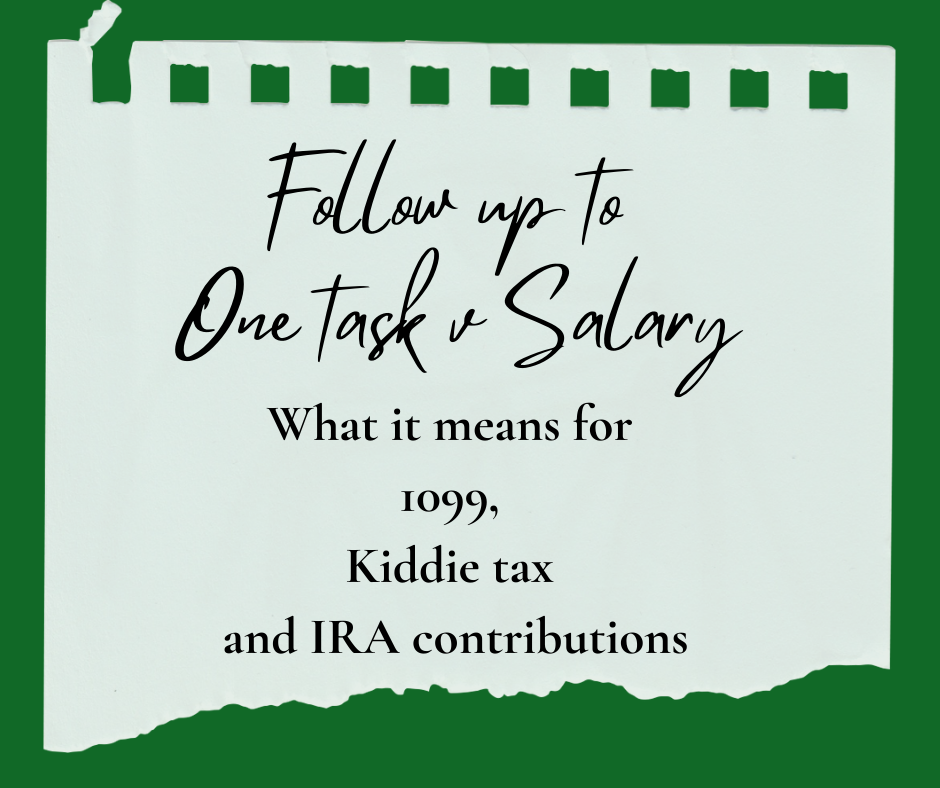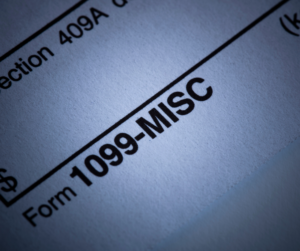Follow up on one time payments for college students
Follow up One time task v Salary
In One task v Salary we discussed how to identify a single job payment versus a trade job (painting the office versus building and maintaining your company website). Today we are going to focus on that one time payment in regards to your college age student.
Now how do you:
- Define them on a 1099
- Avoid the Kiddie tax
- Possibly start an IRA
The 1099
The 1099 reporting is somewhat of a surprise. You report most payments to individuals for services performed on IRS Form 1099-NEC. But that’s not where you report a one-time payment to your child.
In the instructions for IRS Form 1099-NEC, line 1 amounts that are subject to the self-employment tax.
For payments to individuals that are not subject to the self-employment tax, you report them in box 3 of Form
Kiddie Tax
The kiddie tax does not apply to this one-time payment to your college student. Why? Because the student earned income for his personal services.
The kiddie tax applies to unearned income such as investment income.
The kiddie tax rules are used by the IRC to define earned income as “wages, salaries, or professional fees, and other amounts received as compensation for personal services actually rendered.” The key words for the college student are “personal services actually rendered.”
Shameless plug: we can help override the kiddie tax if that is what is necessary
And then there’s a question: Is this student a dependent in the year they received the one time payment? If the student provides more than one-half of their own support for the year, they are not a dependent for the year.
As a dependent, the student pays a higher tax rate, whereas if the student is not a dependent, the tax is lower. Of course, you have to consider the effect (or lack thereof) of dependent versus non dependent will do on their parent’s taxes.
 Contribute to an IRA
Contribute to an IRA
The tax code limits the IRA deduction to the lesser of
(a) the deductible amount
(b) the compensation included in the taxpayer’s income.
The first question: Is this one-time payment to the college student “compensation” in the eyes of the tax code?
According to law people… The IRS interprets compensation to mean wages, salaries, professional fees, and other amounts received for personal services actually rendered.
To simplify, without question, our college student earned the one time payment from his personal services.
As mentioned above, the student’s IRA deduction has a limit of the deductible amount or his taxable compensation. Therefore, the deductible amount is $6,000 for tax years 2021 and 2022, so our student’s contribution to a traditional or Roth IRA is limited to $6,000.
So Yay! A contribution to an IRA is possible to help your student plan for their future!





